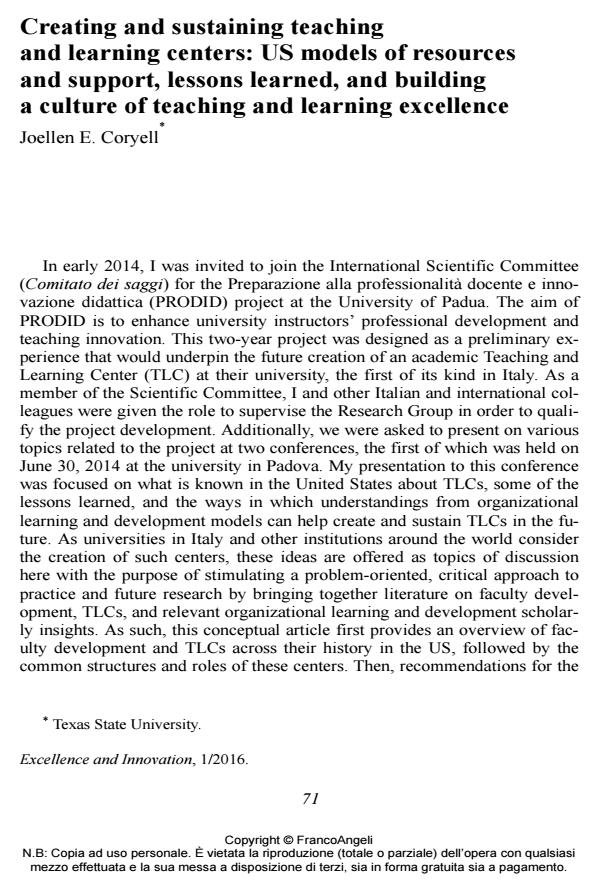Creating and sustaining teaching and learning centers: US models of resources and support, lessons learned, and building a culture of teaching and learning excellence
Journal title EXCELLENCE AND INNOVATION IN LEARNING AND TEACHING
Author/s Joellen E. Coryell
Publishing Year 2016 Issue 2016/1
Language English Pages 13 P. 71-83 File size 51 KB
DOI 10.3280/EXI2016-001005
DOI is like a bar code for intellectual property: to have more infomation
click here
Below, you can see the article first page
If you want to buy this article in PDF format, you can do it, following the instructions to buy download credits

FrancoAngeli is member of Publishers International Linking Association, Inc (PILA), a not-for-profit association which run the CrossRef service enabling links to and from online scholarly content.
This article represents an expanded discussion of a presentation on teaching and learning centers (TLCs) to an Italian national conference on the components of a research project entitled, Preparazione alla professionalità docente e innovazione didattica (PRODID). The article aims to highlight an overview of findings from the research and practice literature regarding TLCs across their history in the United States, including the common structures and roles of these centers. Finally, the author provides theoretical underpinnings from organizational learning and development that are recommended for practice in creating and sustaining effective TLCs including the importance of co-creating value for teaching and learning excellence, building an inclusive learning culture within institutions of higher education, and managing and sustaining organizational change. Suggestions for further research are also provided.
Keywords: Teaching and learning centers; faculty development; learning culture in higher education
- Engaging Transformative Organizational Learning to Promote Employability Loretta Fabbri, Alessandra Romano, in New Directions for Adult and Continuing Education /2019 pp.53
DOI: 10.1002/ace.20341
Joellen E. Coryell, Creating and sustaining teaching and learning centers: US models of resources and support, lessons learned, and building a culture of teaching and learning excellence in "EXCELLENCE AND INNOVATION IN LEARNING AND TEACHING" 1/2016, pp 71-83, DOI: 10.3280/EXI2016-001005